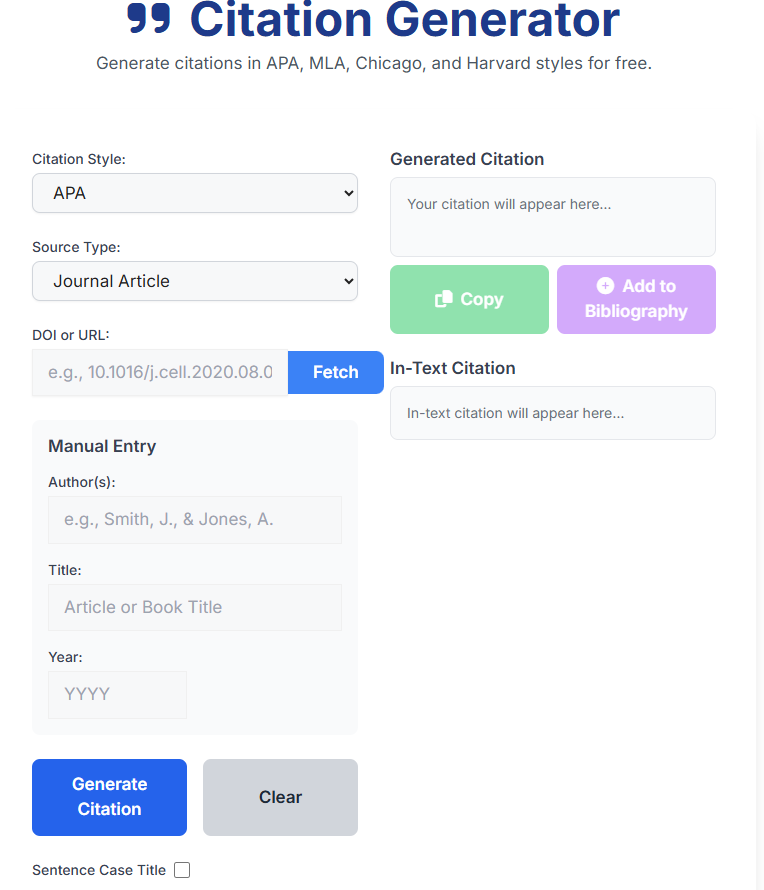If you’re a student, you’ve probably heard the words “APA,” “MLA,” or “Chicago” and felt a little confused. These aren’t just random letters; they are different ways of giving credit to the sources you use in your academic work. Choosing and using the right style is a critical part of writing any paper, whether it’s for history, psychology, or English.
In simple terms, citation styles are like a set of rules for formatting your sources. They ensure that every paper uses the same format, making it easy for readers to understand where your information comes from. Following these rules shows that you are a careful, honest researcher and that your work can be trusted.
This guide will break down the most common citation styles and explain why they matter.
Table of Contents
Understanding the Three Most Popular Citation Styles
While there are many different styles, most students will encounter three main ones: APA, MLA, and Chicago. Each style has its own purpose and is most often used in a specific field of study.
1. APA Style
What it’s for: APA citation is the go-to style for the social sciences. This includes subjects like psychology, sociology, and education. The key focus of APA is on the date of publication, because in these fields, the most recent research is often the most important.
Key Features:
- In-text citations: These are very simple. You use the author’s last name and the year of publication. For example: (Johnson, 2021).
- Reference List: The full details of the source go on a separate page at the end of your paper. The list is alphabetized by the author’s last name. The format emphasizes the author and date.
- Example for a Book: Johnson, M. (2021). The mind of a child. Academic Press.
2. MLA Style
What it’s for: why it is called MLA. MLA stands for the Modern Language Association. This style is most commonly used in the humanities, like English, literature, and art history. In these subjects, the author is often more important than the publication date.
Key Features:
- In-text citations: You use the author’s last name and the page number where the information was found. For example: (Johnson 45).
- Works Cited Page: The full list of sources is on a separate page at the end. The list is alphabetized by the author’s last name. The format emphasizes the author and the title.
- Example for a Book: Johnson, Mark. The mind of a child. Academic Press, 2021.
3. Chicago Style
What it’s for: The Chicago style is a bit older and is very popular in history and some social sciences. It has two different ways of doing things, so it can be a little confusing at first.
Key Features:
- Notes and Bibliography: This is the most common format. You use footnotes (small numbers at the bottom of the page) for your in-text citations. At the end of your paper, you have a bibliography with a full list of your sources.
- Author-Date System: This format is more like APA, where you use the author’s name and the year in parentheses. This is often used in physical, natural, and social sciences.
- Example (Notes): ¹ Mark Johnson, The Mind of a Child (New York: Academic Press, 2021), 24.
- Example (Author-Date): (Johnson 2021)
How to Choose the Right Citation Style
Deciding which style to use is usually not up to you. Most of the time, your teacher, professor, or the journal you’re writing for will tell you exactly which style to use. Before you begin, ensure you are familiar with the requirements.
If you are ever in doubt, ask your professor. They’ll be happy to help you get it right.
The Easiest Way to Handle Citations
Learning every single rule for each citation style can be difficult. The tiniest mistakes—like a misplaced comma or a missing period—can cause problems. And when you have a big research paper with dozens of sources, doing it all by hand can take a lot of time.
This is where a citation generator becomes your best friend. Instead of trying to memorize complicated rules, you can use a free online tool to do the work for you. All you have to do is enter the basic information about your source—like the author, title, and publication year—and the tool will create a perfectly formatted citation in the style you need. It’s a simple and effective way to ensure your reference list is 100% accurate every time.

Final Thoughts
Citations are not just a boring requirement; they are a sign of good academic practice. By understanding the different styles and using the right tools, you can ensure your work is always honest, credible, and well-organized. With a little practice, citing sources will become a simple and natural part of your writing process, allowing you to focus on what really matters: your ideas.
